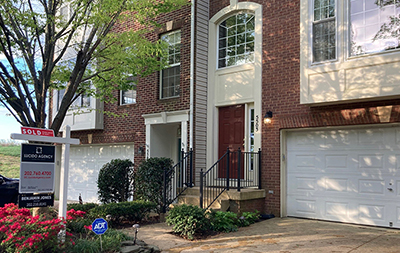
Existing Home Sales Fall 4th Straight Month; Median Sales Price Breaks $400,000

May existing home sales fell by 3.4 percent from April, marking the fourth consecutive monthly decline, the National Association of Realtors reported Tuesday.
NAR also reported the median home sales price of existing homes broke the $400,000 barrier for the first time, topping out at $407,600—an annual increase of nearly 21 percent.
The report said total existing-home sales (https://www.nar.realtor/existing-home-sales) fell by 3.4% from April to a seasonally adjusted annual rate of 5.41 million in May. Year-over-year, sales fell by 8.6% (5.92 million).
Single-family home sales fell to a seasonally adjusted annual rate of 4.80 million in May, down 3.6% from 4.98 million in April and down 7.7% from one year ago. The median existing single-family home price jumped to $414,200 in May, up 14.6% from a year ago. Existing condominium and co-op sales fell to a seasonally adjusted annual rate of 610,000 units in May, down 1.6% from April and down 15.3% from one year ago. The median existing condo price rose to $355,700 in May, an annual increase of 14.8%.
Regionally, sales were mostly on the down side. Sales in the South fell by 2.8% in May to an annual rate of 2,410,000 and fell by 8.4% from the previous year. The median price in the South jumped to $375,000, up 20.6% jump from one year ago. For the ninth consecutive month, the South recorded the highest pace of price appreciation over the other three regions.
Sales in the West fell by 5.3% from April to an annual rate of 1,080,000 and fell by 10.0% from a year ago. The median price in the West rose to $633,800, an increase of 13.3% from a year ago. Sales in the Midwest dropped also fell by5.3% from April to an annual rate of 1,240,000 and fell by 7.5% from a year ago. The median price in the Midwest rose to $294,500, up 9.5% from a year ago.
Only the smallest region, the Northeast, saw any improvement. Sales there rose by 1.5% in May to an annual rate of 680,000 but fell by 9.3% from a year ago. The median price in the Northeast rose to $409,700, a 6.7% rise from one year ago.
“Existing home sales have now fallen back to their pre-pandemic pace,” said Mark Vitner, Senior Economist with Wells Fargo Economics, Charlotte, N.C. “Higher prices and rising interest rates have reduced affordability.”
Lack of inventory has also been a major hurdle, Vitner noted, and the report showed signs of improvement: Inventories rose to 1.16 million in May, up by nearly 13 percent from April but still down by 4.1 percent from a year ago. “With inventories increasing, price cuts are becoming more common, particularly in formerly white-hot markets like Phoenix, Las Vegas and Austin,” he said. “We expect to see more discounting in coming months, as rising mortgage rates likely caused many buyers to cancel or renegotiate contracts.”
NAR Chief Economist Lawrence Yun noted market movements of single-family and condominium sales were nearly equal, “possibly implying that the preference towards suburban living over city life that had been present over the past two years is fading with a return to pre-pandemic conditions.”
NAR said the median existing-home price for all housing types in May rose to $407,600, up 14.8% from a year ago ($355,000), as prices increased in all regions. This marks 123 consecutive months of year-over-year increases, the longest-running streak on record.
Properties typically remained on the market for 16 days in May, down from 17 days in April and 17 days a year ago. Eighty-eight percent of homes sold in May were on the market for less than a month.
First-time buyers were responsible for 27% of sales in May, down from 28% in April and down from 31% a year ago. All-cash sales accounted for 25% of transactions in May, down from 26% in April and up from 23% in May 2021. Individual investors or second-home buyers purchased 16% of homes in May, down from 17% in April and a year ago.
Distressed represented less than 1% of sales in May, essentially unchanged from April 2022 and a year ago.
